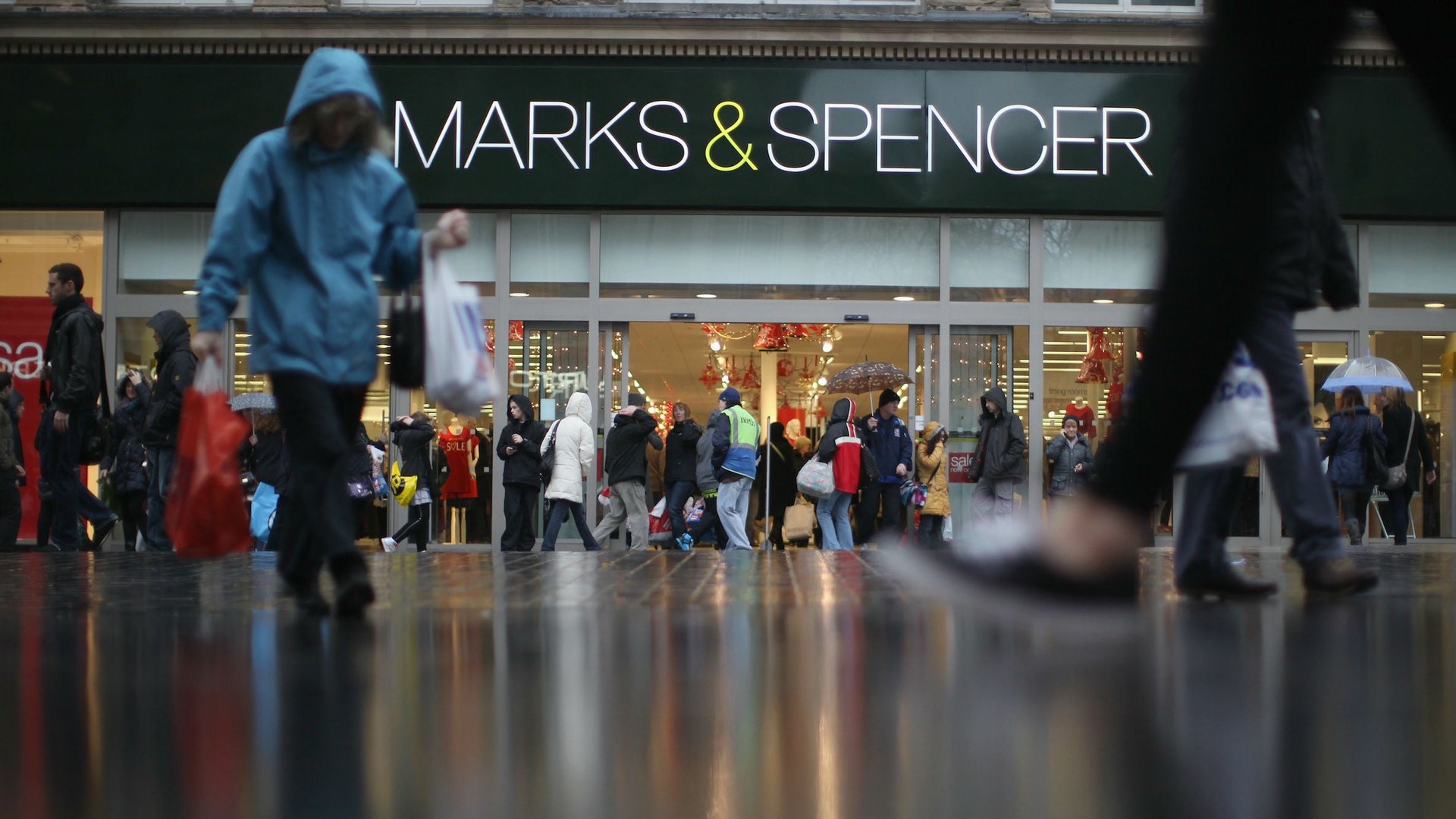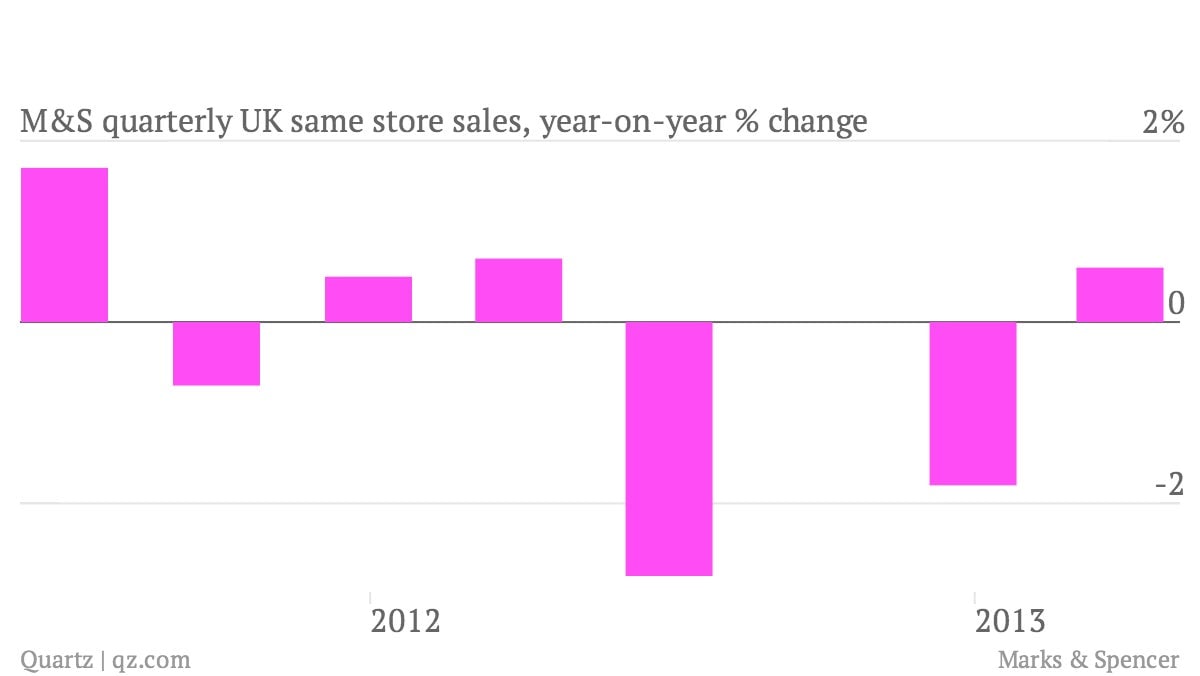Sexy underwear and 49-year-old shoppers can’t save Marks & Spencer
An attempt to revive one of the United Kingdom’s largest clothing retailers by volume, Marks & Spencer, isn’t going that well. The company, which sells clothing and food in its ubiquitous M&S stores across the country, has reported a 3.8% fall in same-store-sales of general merchandise, mostly clothing, for the first quarter of the year. Although overall revenues rose 6% for the period, this is M&S’ seventh consecutive quarter of declining general merchandise sales.


An attempt to revive one of the United Kingdom’s largest clothing retailers by volume, Marks & Spencer, isn’t going that well. The company, which sells clothing and food in its ubiquitous M&S stores across the country, has reported a 3.8% fall in same-store-sales of general merchandise, mostly clothing, for the first quarter of the year. Although overall revenues rose 6% for the period, this is M&S’ seventh consecutive quarter of declining general merchandise sales.
The store excels at a few areas like food (which were up by 4%) and undergarments, but shareholders are ratcheting up pressure on CEO Mark Bolland to turn around (paywall) lagging overall sales. Bolland has been trying to revamp the centuries-old store, which has outlets abroad but whose core market is the UK, by sexing up its appeal through new sub-brands like a new lingerie line and hiring staff like Belinda Earl, the former head of Debenhams, and Janie Schaffer, former chief creative officer at Victoria’s Secret. Still, the average age of the M&S shopper is 49, according to research firm Mintel.
Bolland promises to turn around clothing sales by the fall, but it remains to be seen whether the chain can reverse its struggle against not just a slow retail environment in the UK, but the overall “fast fashion” retail movement. Falling total sales, including food and clothing, (chart below) are evidence of M&S getting beaten out by others who offer inexpensive but trendier options or British retailer Next, which has focused on online retail. M&S used to excel by offering “convenience and generic good taste,” writes Harriet Walker, a fashion journalist in the UK. Now, she writes, it is neither speedy nor very cheap.
